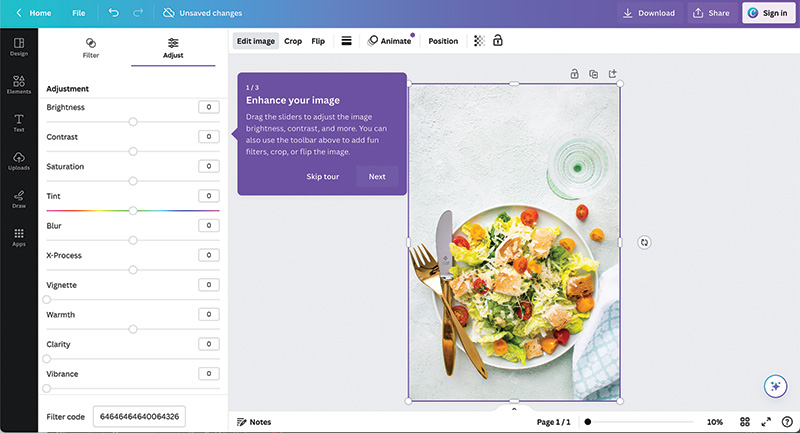Stay Connected!
Sign up today and get inspiration straight to your inbox.
Artificial Intelligence can craft a message – fast
When it comes to creating clever, original, on-brand messaging for restaurant promotions, newsletters and website copy, it’s easy to get stuck, especially with so many other responsibilities.
That’s where AI comes in. Gemini, ChatGPT, Canva and other AI tools can make a world of difference when it comes to creating content. Among all the ways artificial intelligence can help restaurants, these chatbots arguably are the easiest entry points. Create an account for free in most cases, type in a prompt and get a response.
Getting a worthy answer, however, requires some effort. It’s smart to have a solid strategy to harness the technology so that it works for you.
Here are some tips, tricks and best practices for creating content with AI, from using the best prompts to tweaking copy so it sounds like your own brand and style.
Without direction, AI will produce very generic messaging for social media posts, newsletters and website copy. Understanding the nuances of your brand’s personality, tone and style will help AI customize your content so your business stands out in a crowd.
Start by defining your brand and voice, says Stefany Elliott, president and founder of The Same Paige. Her firm works with various restaurants around the East Coast, including New York City’s The Richardson and Assembly in Washington D.C.
Use brand-specific terms, phrases and references when writing prompts for AI-generated content. For instance, if using ChatGPT to help write social media captions for holiday programming, train it to understand your restaurant concept, location and target audience along with menu items.
“These tools don't know your brand, your story, your clientele,” says Elliott. “Use as much detail as possible when utilizing AI.”
“Restaurant operators should master the art of crafting prompts that clearly convey the desired tone, style and content focus,” says Phyllis Hong, CEO and founder of Privileged Insights, a boutique consulting firm that specializes in ChatGPT, guerrilla marketing and social media. “Specificity will significantly impact the relevance and accuracy of the generated content.”
That’s to say: AI-generated content is all about what you put into it. To generate language for a new menu promotion on social media, create a prompt about the menu item, words or colors you don’t want to use, and even the restaurant’s location.
To create newsletter copy to help drum up new brunch business, fashion a prompt around the most popular brunch dishes and drinks, as well as mention outside seating, a DJ, a projector showing movies or any other point of difference.
Hong also recommends using the same window for all related queries to ensure consistency. For instance, don’t use the same AI window to plan your family vacation while trying to generate newsletter headlines or a new brunch promotion.

When it comes to creating content, AI tools exist for just about everything. For social media posts for her restaurant and bar clients, Elliott and her team rely on Canva’s AI tools to generate or clean up photos. For instance, she’ll remove unwanted people or items from the background of a photo, or use Canva’s Magic Edit tool to change the garnish on a cocktail from a lemon to a lime before posting it.
Photo-generating AI tools can also create designs, color schemes, new fonts and more for content. One of Elliott’s clients used AI to create a logo for a rebrand.
For compelling website copy, create a prompt for keyword-rich text that’s SEO-friendly. By adding SEO-rich keywords to your website, say on the “about us” page or a blog post, potential customers can more easily find you on search engines such as Google.
Fill in prompts about your brand into tools such as Grammarly to proofread restaurant-specific text for newsletters, website copy, menus and marketing materials. Typos and misspellings can send customers elsewhere, fast.
“Using AI has been like having an extra team member, but that team member is a super eager intern who is excited to learn and doesn't quite yet understand what the company does,” says Elliott. “It is user-friendly, accessible and always available, but it can never fully grasp a unique brand identity or voice.”
When it comes to creating content for restaurants, there’s only so much AI can do. You still need humans to review and tweak AI-generated content, to finesse website and newsletter copy, or to ensure the Instagram post is on-brand and timely. It still takes some nuance to get the messaging just right, nuance that artificial intelligence doesn’t quite have yet but is advancing. For example, Owner offers a platform with a drop-down menu for choosing menu items, holiday or special occasions and tone of voice, such as Yoda from Star Wars, to craft short messages.
Still, any shortcomings shouldn’t turn anyone off, says Brian Howard, executive chef and owner of Spaghetti on the Wall Hospitality in Las Vegas. Embrace everything AI can do for the restaurant.
“Find ways to use this technology to your advantage since the world is not slowing down, especially for our industry,” he adds. “Chefs are famous for saying, ‘If only I could clone myself, I might be able to keep up’. And now you almost have the opportunity to do just that.”